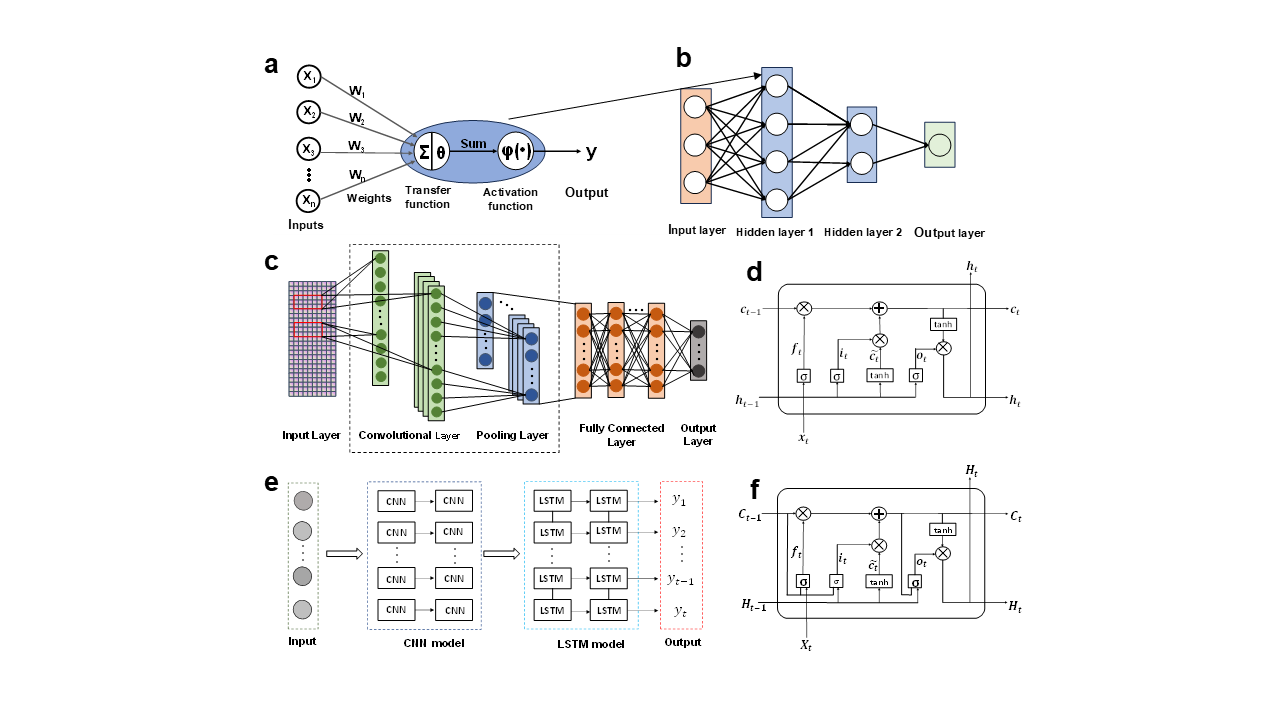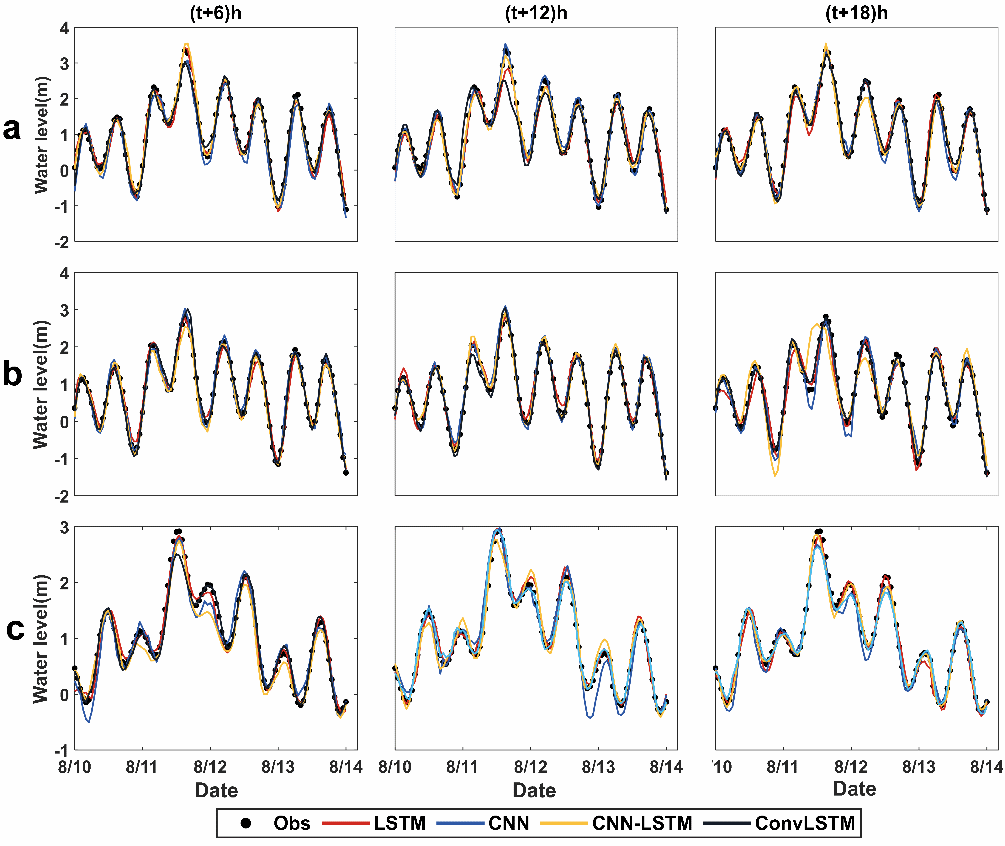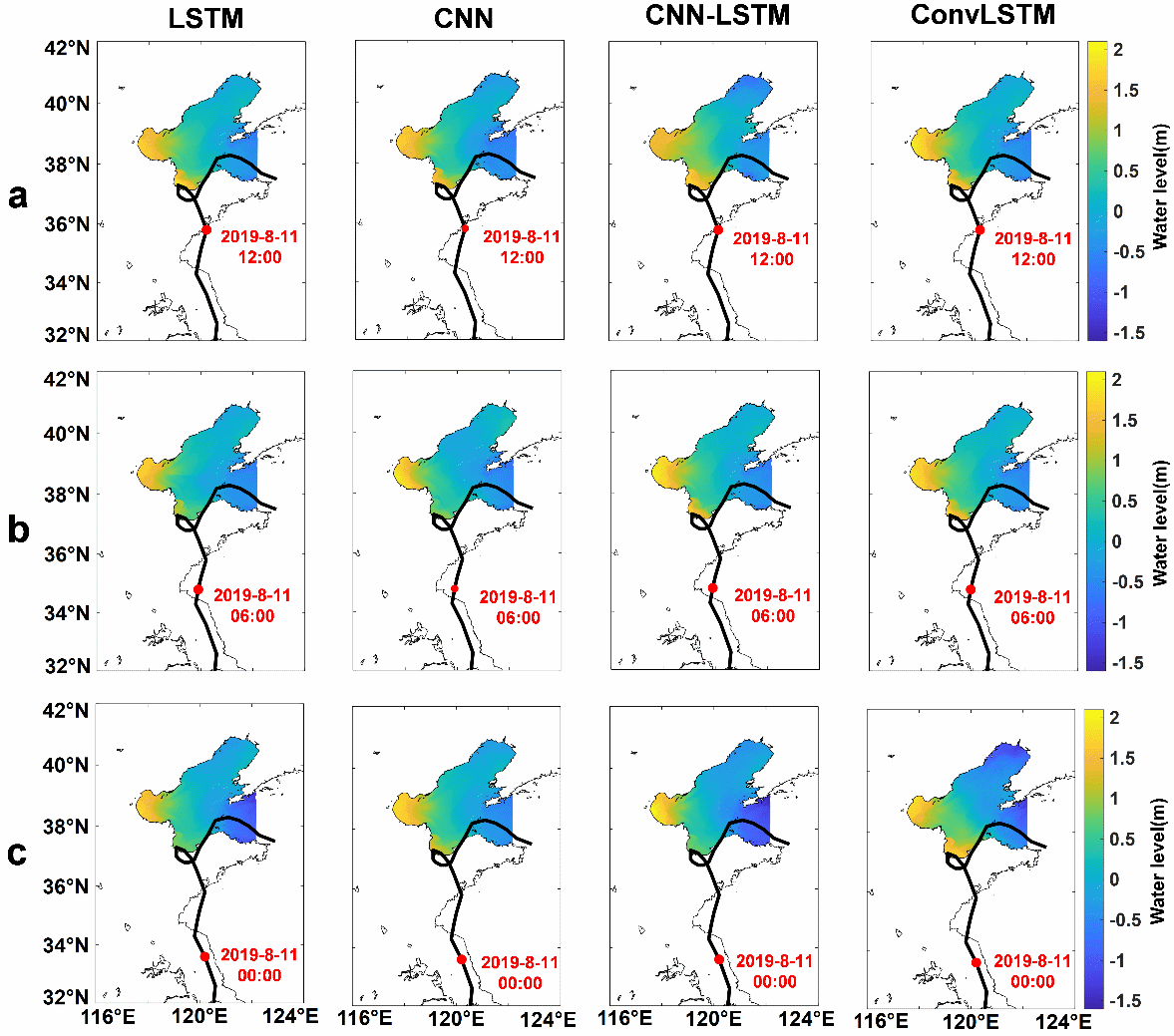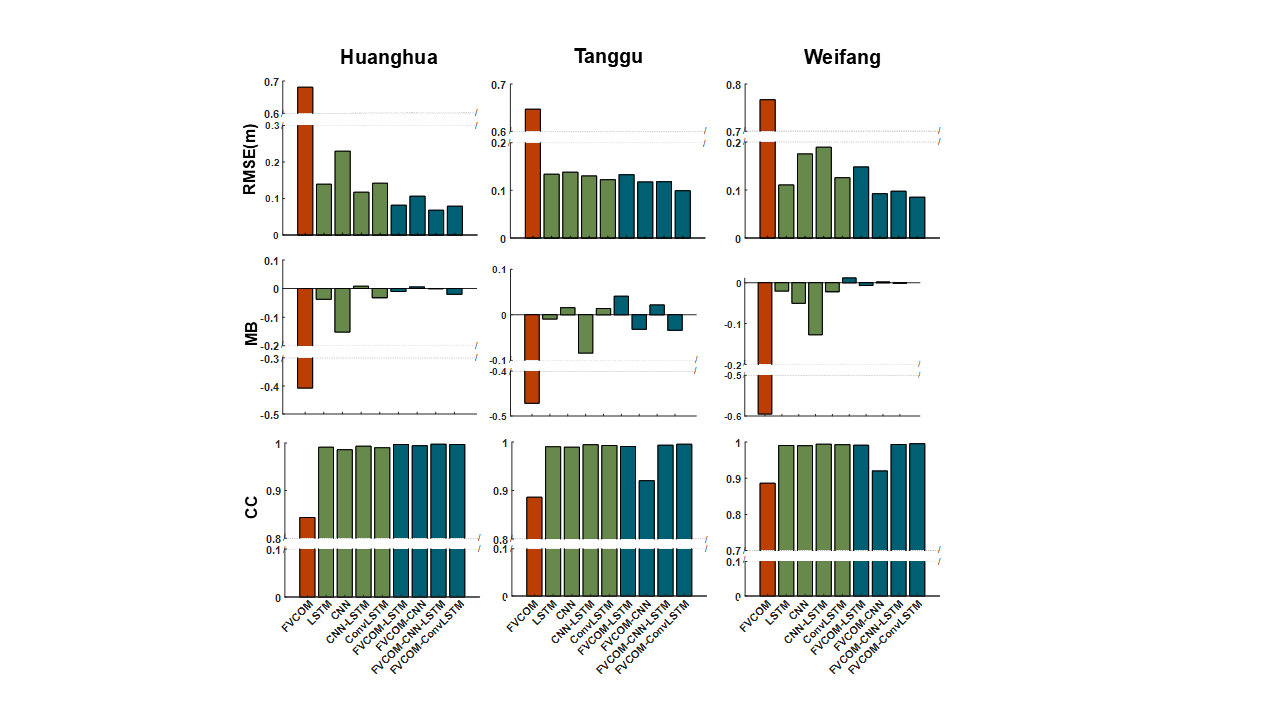
A research team led by Prof. MAO Miaohua at the Yantai Institute of Coastal Zone Research of the Chinese Academy of Sciences, has developed a method for predicting storm surges. This innovative approach enhances the quality of typhoon wind field modeling through the use of a hybrid wind field. The researchers created four Machine Learning (ML) models to predict storm surges, significantly improving forecasting accuracy when integrated with the Finite Volume Community Ocean Model (FVCOM-ML). Their findings were published in the Journal of Geophysical Research: Machine Learning and Computation.
Accurate and timely storm surge predictions are essential for effective coastal zone management and risk reduction strategies. The semi-enclosed Bohai Sea in the Northwest Pacific, which was historically less affected by typhoon events, has recently experienced a shift in typhoon activity patterns. As a result, reliable storm surge predictions are crucial for safeguarding lives and property in coastal regions.
In this study, a hybrid wind field was developed by combining the reanalysis wind field with the Holland model. The team created four ML models to compensate for missing data by utilizing numerical simulations of storm surges conducted with the Advanced Circulation Model. The integration of these methods improves prediction accuracy and reduces uncertainty by delivering forecasts for storm surges with lead times of 6, 12, and 18 hours in conjunction with FVCOM (FVCOM-ML).
While there is no significant difference in forecast accuracy among the four ML models for single-site and single-step storm surge predictions, accuracy tends to decrease as the forecast lead time increases. The integrated model's prediction accuracy for single-site and multi-step storm surges is over 30% higher than that of individual models. Additionally, the forecasting performance of the integrated model for multi-site storm surges notably surpasses that of single models, particularly for multi-site multi-step predictions.
By combining ML techniques with numerical models, FVCOM-CNN-LSTM and FVCOM-ConvLSTM demonstrate high prediction capabilities. Unlike traditional ML, which relies solely on objective functions and does not adhere to physical principles, FVCOM-ML simulates residuals that effectively mitigate the uncertainties typical of conventional methods. The prediction accuracy of the ML models in Bohai and Laizhou Bays exceeds that of Liaodong Bay for storm surges. When compared to single models, the integrated models enhance the accuracy of storm surge predictions in the Bohai Sea by 18%.
Moreover, using ML techniques can reduce the costs associated with storm surge predictions, positioning these models as potential rapid-response forecasting systems for future storm surges.
This work was supported by the National Natural Science Foundation of China, the CAS President's International Fellowship, and other sources.

Schematic diagram of the ML models (Image by the research group)

ML models prediction of storm surge versus observed data (Image by the research group)

The ML models predict storm surge of "Lekima 1909’with lead time of 6, 12 and 18h. (Image by the research group)

Comparison of FVCOM, ML and FVCOM-ML results for storm surge prediction (Image by the research group)

86-10-68597521 (day)
86-10-68597289 (night)

52 Sanlihe Rd., Xicheng District,
Beijing, China (100864)

